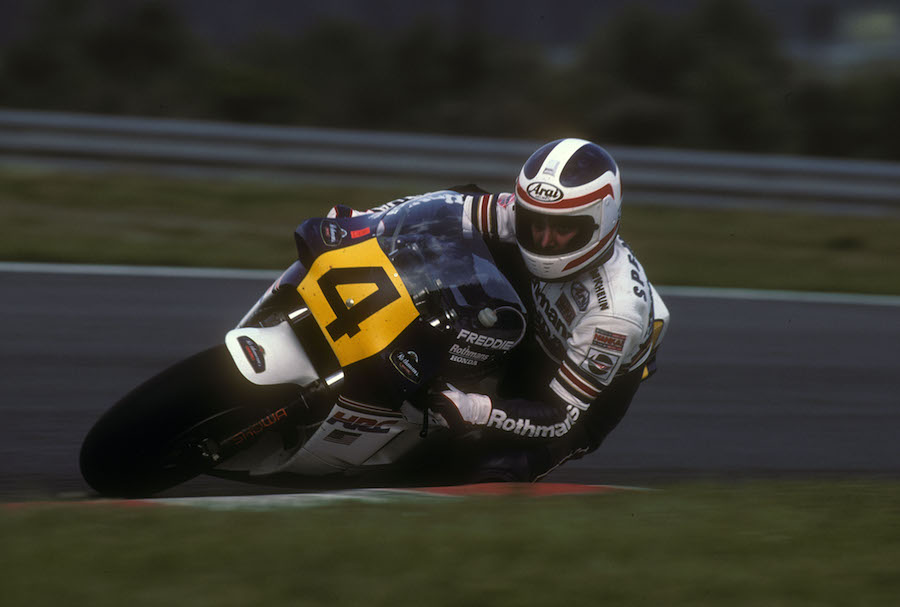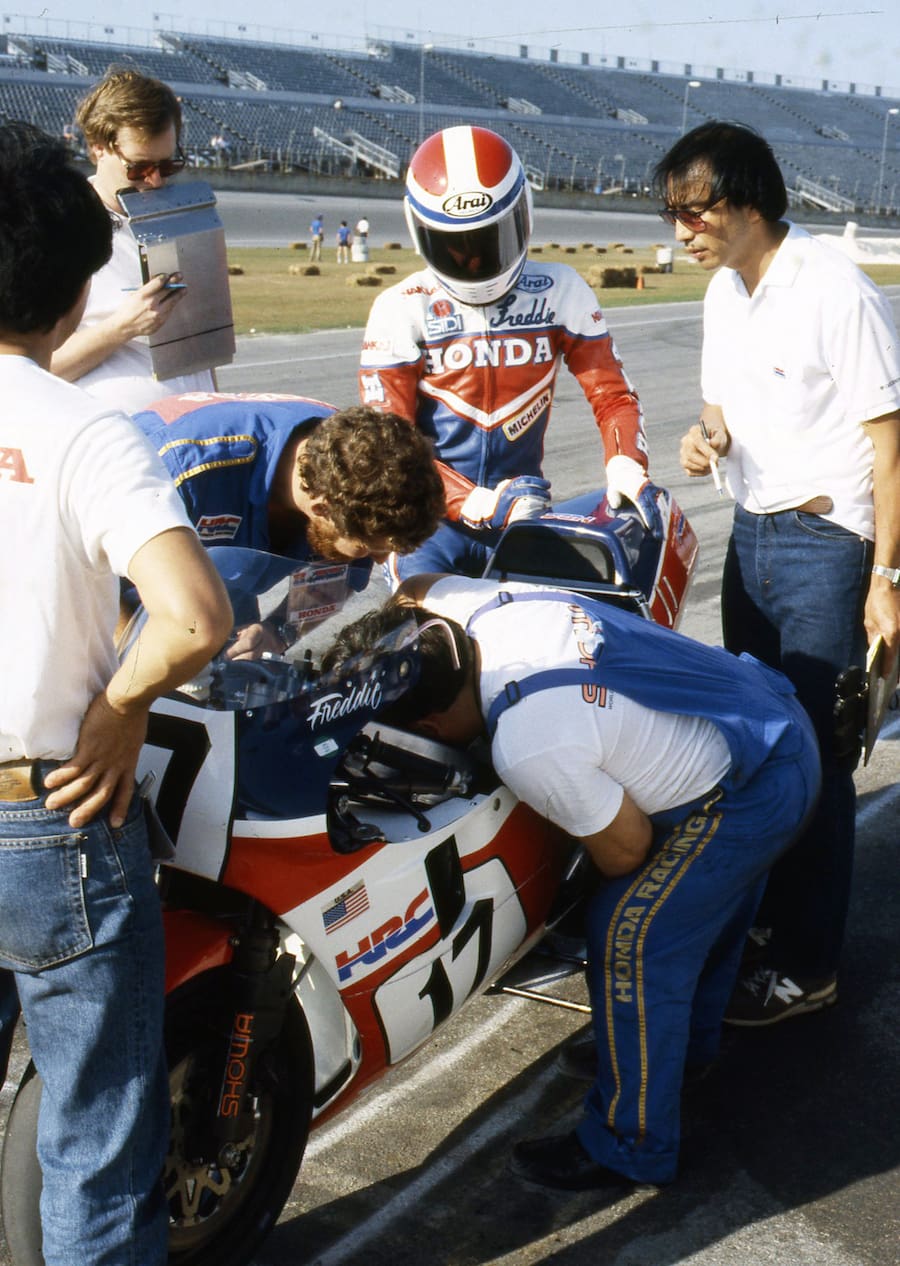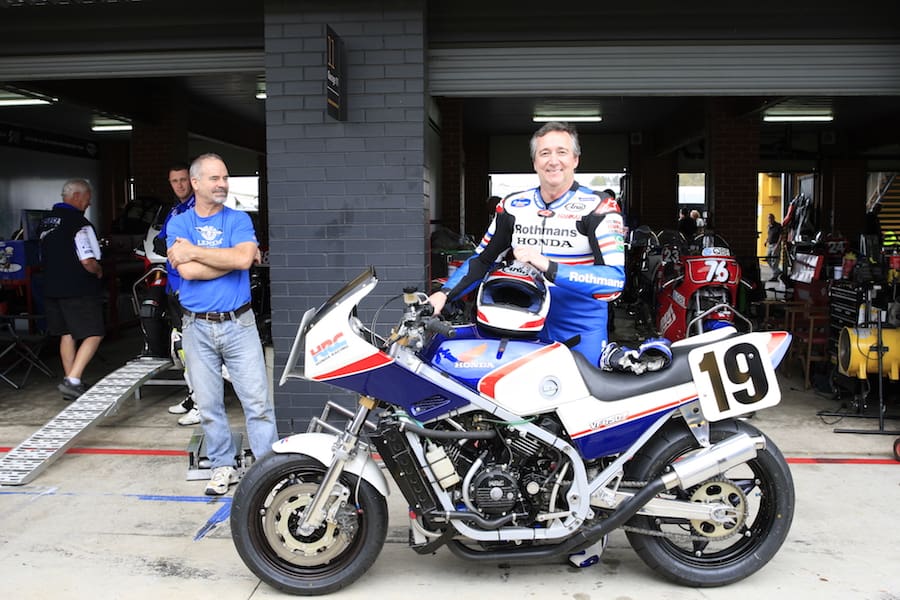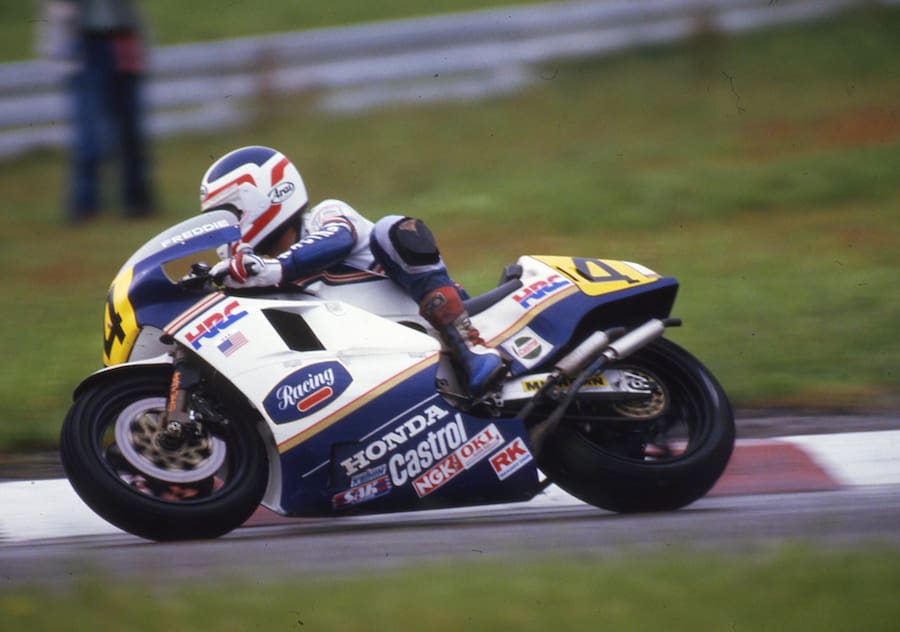Freddie Spencer is the only man to clinch the 250 and 500 GP titles in the same year reveals his greatest battles – both on and off the track – in a gripping new autobiography
You might think GP legend Fast Freddie Spencer baptism of fire was scraping shoulders and banging handlebars at some dusty American dirt track. But, as his new autobiography reveals, it was falling into a fire at his family’s two-acre Louisiana property at the age of two that gave the triple world champion the fierce determination that ultimately led to his amazing never-to-be-repeated world title double in 1985.
Chatting exclusively to AMCN ahead of the book’s launch on 20 April, the 55-year-old racing legend revealed that getting into motorcycling at the age of four helped him overcome the emotional scars left by accidentally falling into a leaf fire.
“My left hand and arm sustained the worst damage – the skin was completely burnt off – and I had to have seven skin graft operations,” Freddie remembers. “When I was five my parents were told I’d lose my hand. The doctors didn’t give me much hope. I actually wore a sock over my hand as it couldn’t be exposed to the sun very long.

Spencer and Kanemoto, British GP 1985
“But when I rode a motorcycle, all those anxieties went away. Those 10 years riding in my yard [from the age of four to 14] were the most important parts of my learning and healing process. It was the greatest therapy.
“I developed a level of toughness and turned the trauma into something positive for me and the relationships that formed from that incident – including the gardener who chased after me and pulled me out of the fire before I fell in completely.”
Freddie – who first rode the HRC250 and 500 together at the old Surfers Paradise circuit in 1984 and was teammate to Wayne Gardner before retiring in 1988 – went from a suspensionless Briggs & Stratton mini-bike with a 50cc lawnmower engine to high-performance bikes purpose-built by his father.
“We had 200 pine trees on our property that I rode through. I had to look so far ahead and if the leaves on the ground were a dark colour – because they were damp – I wouldn’t have as tight a radius and less lean angle. That was my traction control.

Spencer, Swedish 500GP 1985
“I didn’t wear gloves because I wanted that feel, that connection to the motorcycle through the ’bars. I realised that I could go quicker by carrying more entry speed, and then adjusted the bike’s speed at the exact moment of direction change.”
These days Freddie teaches track riding at Paul Ricard in France and takes part in events for Honda, Triumph and Yamaha as well as attending classic events such as the International Festival of Speed.
In his book, Spencer recalls his time at the front of the GP grid, giving a unique insight into his fierce battles with other stars of the day such as Kenny Roberts. He also takes us behind the scenes, including the secret meetings in his motorhome, and the ways he tried to spot competitors’ weaknesses – for example, King Kenny was prone to moving his left leg in a certain way when he was nervous.

Spencer, Austrian 500GP 1985
“But this book is not just about racing and all my battles on track,” Freddie says. “I could talk all day long about the different characteristics of riding an oval-piston four-stroke NR500 versus the NS500 three-cylinder two-stroke. I wrote the book as I wanted to express what I experienced with my riding and the ways it helped me.
“Many people have been interested in what happened in 1986 and I share the critical moments through my career.”
These include his decision to start a riding school in Las Vegas in 1997 and the horrendous crash in Japan during his last GP season in 1988, when he smashed both ankles, a knee, wrist and finger following suspension failure.

“At the speed I went into the guardrail I truly felt there was no way I was going to make it. I talk about how I woke up in the ambulance and what it was like in the chaos of the emergency room – people wanted to take photos while I was sitting there and the doctors were trying to sew my finger back on. Those are moments you ask yourself whether it’s worth it. The crash was one of the things that made it obvious that I should move on and do something else.
“I also write about that moment at the Mugello Grand Prix [1985] where at the peak of my career I finally won both races [250cc and 500cc] in one day. It was hot, well over 37°, and it was a very hard 500 race with Eddie Lawson and Christian Sarron. In the 250 race I got off the line 19th in the first lap and won the race!
“But as I sat in my motorhome, with the two trophies on the table in front of me, I got this sense that winning isn’t everything.
“The reason my book’s called Feel is that it’s about what I felt on the track, and what it taught me about life. It’s about what we learn by our interactions and the trust in each other.”

Highlights
IN ADDITION TO
his unique 250/500 double, Spencer is the only rider to have won three major races during Bike Week at Daytona, and was the youngest rider to win a premier-class world championship – until Marc Márquez broke his record 30 years later.
He went on to win three more US Superbike nationals, including his memorable final AMA national victory on a rain-soaked Laguna Seca Raceway in 1995. He officially retired later that year.
Favourite moment:
Besides the epic battles with Kenny Roberts, Freddie says it was being invited to Mr Honda’s home in Japan after winning the 500cc championship in 1983. “Only Mike Hailwood got invited there before. He put his hands on my shoulders and said: ‘Thank you for winning the world championship for me’. He had two dreams when he started the company – to win at the Isle of Man [which Honda did in 1961] and to win the 500 world championship.”
Favourite bikes:
The 1985 NSR250 and NSR500. The V4 went on to become the most successful bike in grand prix racing history – 13 world titles and the most GP wins ever. As the main HRC rider, Freddie developed both these bikes, and the 250 began with a clean sheet of paper. “Every bike before it was very flat, with a lot of steering angle. We gave it some ride height with the Unit Pro-Link and some trail. It was the beginning of our understanding of every bike you see today. It allowed me to carry more entry speed and I always over-turn the bike, using the rear to rotate it on corner entry – something Marc [Márquez] does so well today.”


INTERVIEW OSCAR KORNYEI
PHOTOGRAPHY AMCN ARCHIVES